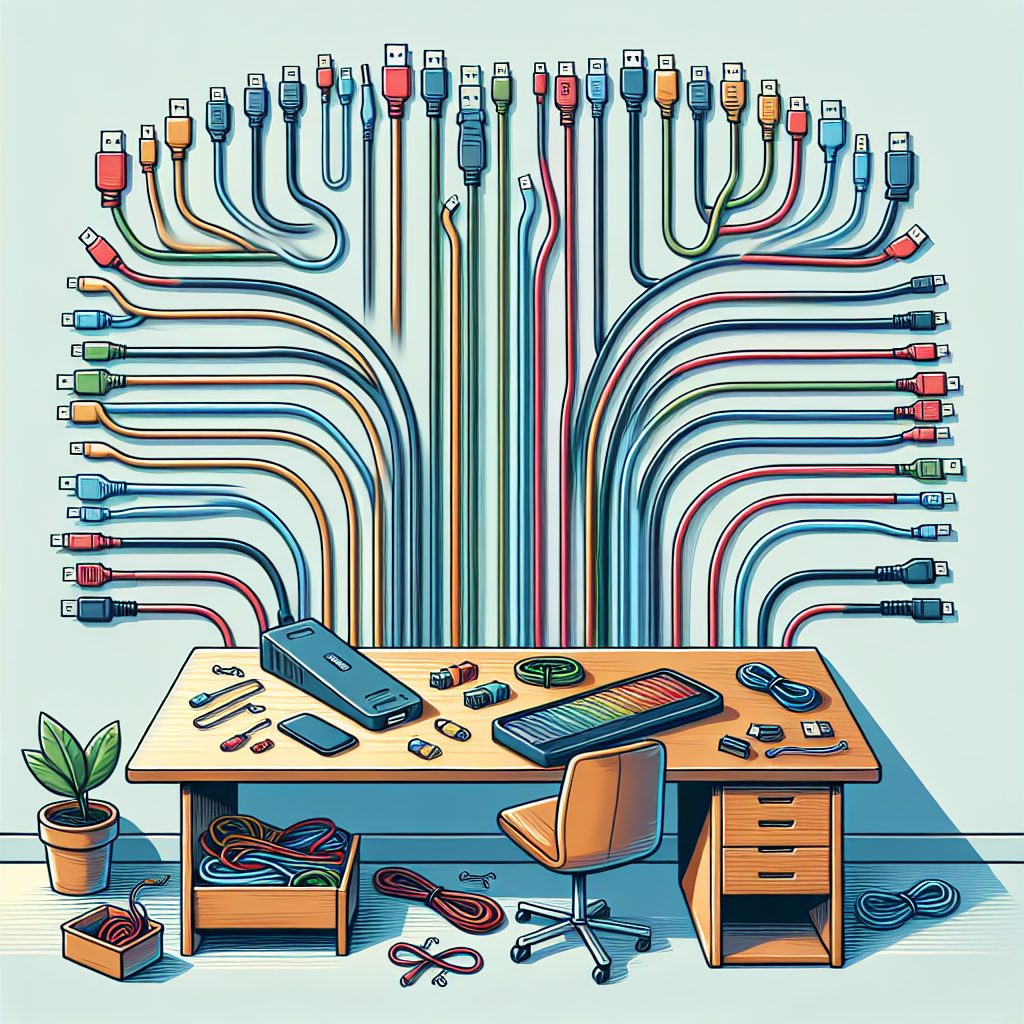Introduction
In today’s technology-driven world, the use of USB expanders has become increasingly common. These devices allow users to connect multiple peripherals to a computer or laptop, significantly enhancing productivity. However, with the addition of various cables, managing them effectively can be a challenge. This article explores the best ways to manage cables when using a USB expander, providing valuable tips and tricks for keeping your workspace organized and clutter-free.
Understanding USB Expanders
Before diving into cable management strategies, let’s first understand what a USB expander is and how it works.
What is a USB Expander?
A USB expander, often referred to as a USB hub, is a device that allows multiple USB devices to connect to a single USB port on a computer. It typically comes with several ports, accommodating various USB types, such as USB-A and USB-C.
Types of USB Expanders
USB expanders can vary in design and functionality. Below is a brief overview of the most common types:
- Passive USB Hubs: These hubs require no external power and draw energy from the computer.
- Powered USB Hubs: These hubs have their power source, allowing them to support power-hungry devices.
- Wireless USB Hubs: These hubs connect devices wirelessly, eliminating the need for physical cables.
Cable Management: Why It Matters
Effective cable management is crucial for several reasons. It can help prevent tangles, reduce wear and tear on cables, and create a more visually appealing workspace. A tidy environment can also boost productivity and reduce stress. Below are some key benefits of good cable management:
- Enhanced Organization: Keeping cables organized makes it easier to identify connections.
- Reduced Damage: Proper management helps prevent fraying and damage to cables.
- Improved Airflow: Organizing cables can enhance airflow around devices, reducing the risk of overheating.
Strategies for Effective Cable Management
Now that we understand the importance of cable management, let’s explore some effective strategies to keep your USB expander setup organized.
1. Use Cable Ties
Cable ties, also known as zip ties, are a simple and effective tool for organizing cables. They can help group multiple cables together, preventing clutter. You can choose from various types, including:
- Reusable Ties: Ideal for settings where cables may change frequently.
- Velcro Ties: These are gentle on cables and provide flexibility.
- Plastic Ties: Cost-effective but not reusable.
2. Label Your Cables
Labeling is a crucial step in cable management. By clearly labeling each cable, you can easily identify its purpose and ensure quick connections. You can use:
- Label Makers: For professional-looking labels.
- Color Coding: Use different colored tape to signify different devices.
3. Utilize Cable Management Boxes
Cable management boxes can help hide and organize cables effectively. These boxes can be placed on desktops or under furniture. Advantages of using cable boxes include:
- Hiding unsightly cables.
- Providing a designated space for power strips.
- Enhancing the aesthetics of your workspace.
4. Employ Cable Sleeves
Cable sleeves are fabric or plastic tubes that encase multiple cables, keeping them bundled and organized. These sleeves can be cut to the desired length and are perfect for:
- Reducing the risk of tangles.
- Offering protection against fraying.
5. Consider Cable Clips
Cable clips can be attached to desks or walls to hold cables in place, preventing them from falling or becoming tangled. They are available in various designs and styles:
- Adhesive Clips: Easy to install and remove.
- Magnetic Clips: Perfect for temporary setups.
6. Plan Cable Pathways
Understanding the best pathways for your cables is crucial. Map out the optimal routes for your cables before installation. Here are some tips:
- Avoid crossing cables whenever possible.
- Run cables along walls or furniture edges.
- Use designated pathways if available.
7. Integrate Wireless Solutions
Whenever possible, consider using wireless devices to reduce the number of cables required. This can include:
- Wireless keyboards and mice.
- Bluetooth speakers.
8. Regular Maintenance
Lastly, conducting regular maintenance on your cable management system is essential. This involves:
- Checking for frayed cables or loose connections.
- Reassessing your setup for efficiency.
- Updating labels and organizing as new devices are added.
Creating a Cable Management Plan
To summarize the best practices for managing cables with a USB expander, it can be helpful to create a cable management plan. Below is a suggested outline for your plan:
| Steps | Details |
|---|---|
| 1. Inventory Your Cables | List all cables, noting their lengths and types. |
| 2. Choose Cable Management Tools | Select appropriate tools like ties, clips, and sleeves. |
| 3. Plan Layout | Decide on optimal routes and locations for cables. |
| 4. Execute Your Plan | Organize and install your cables using the chosen tools. |
| 5. Maintain Your Setup | Regularly check and update your cable management system. |
Conclusion
Effectively managing cables when using a USB expander is vital for maintaining a neat and functional workspace. By implementing the strategies discussed in this article, you can enhance organization, reduce clutter, and increase overall productivity. Whether using cable ties, labeling, or exploring wireless options, taking the time to manage your cables will pay off in the long run. Remember, a well-organized workspace contributes to a clearer mind and improved efficiency!

